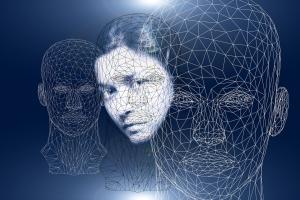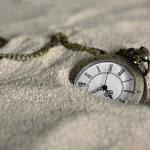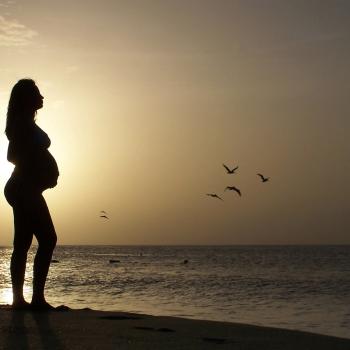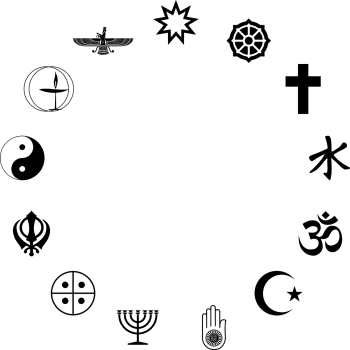
What Is Life?
This question is largely subject to the same considerations listed above in regard to Consciousness. We commonly think of ‘life’ as something that an entity “has”. And when that experiencing subject dies, it no longer has life.
In conventional thought, living things are characterized as those that possess a particular set of traits. These include the ability to act independently in the environment, the ability to learn, grow, adapt, and reproduce, the ability to utilize energy and simple phenomena in order to produce more complex phenomena (even if only their own bodies).
Some of the above appear in systems not typically considered to be ‘alive’. This includes the universe itself, which apparently “complexified” from a simple state of energy and light, into the complex and varied world that we live in today. The question then, is at what point of complexity is a system considered to be living?
As with consciousness, this question might be turned inside-out by suggesting the universe itself is a living system — one that manifests in a range of events and phenomena, at a range of levels of complexity. This is suggested by the cosmic trajectory of increasingly complex structure found in the universe today, in contrast to its early initial state — apparently in violation of the Second Law of Thermodynamics (entropy must increase).
Committed materialists however, may continue to explain this away as a statistical inevitability due to the vastness of the cosmos. It is for each of us to decide which perspective makes our lives sensible.
What Is the Self?
What is it that distinguishes one person from another? What makes you “you” and me “me”? These distinctions are generally thought of as bundles of traits — genetic, physiological, enculturation, experience, thought, memory, behavior.
Much of who we consider ourselves to be in the moment, how we evaluate things and make decisions, how to decide what we can or cannot do, is based on our memory of similar circumstances in the past. Because of this, we tend to think of ourselves as the “same” person, throughout our lives, birth to death.
Yet there is a somewhat modular nature to our personality — who we “are”. It would be overwhelming to wholly redefine ourselves in each moment or situation, so as a convenience, we tend to rely upon personality “modules” — a remembered package of traits, values, choices, abilities or inabilities, actions, memories, and the like. (As one example, I, the writer, gravitate toward the “introvert” module. Accordingly, when confronted with a social situation, I tend to think, act, and chose in a way consistent with my image of introversion rather than extroversion.)
Some of these trait modules are persistent over time — genetic qualities and predispositions, physical training, significant formative experiences and injuries, memories of past events and learning. These are generally “habits” of perception and thought. Other traits can change or evolve — learning new knowledge or skill, exposure to new social or ecological environments, changes in diet or physical activity, changing values and attitudes, psychotherapy.
In a real sense, “me” is simply a summary label for a vast range of trait-bundles accumulated over a lifetime.
Futurist Buckminster Fuller once offered the analogy of a rope made of different materials strung together — cotton, hemp, nylon, wire, etc. Tie a slipknot in one end of the rope, then slide it through the length. At various points, the knot is composed of different substances, yet it is the same knot. What persists? It is the pattern.
Similarly, most of the cells of a living body are completely replaced every seven years or so. Yet we consider ourselves the same person due to our overall pattern of physiology, knowledge, behavior, and life circumstance. Some might also consider this to be a “soul” — the essence of who we are.
The Self and Continuous Creation
As described above in regard to the world, and again, in view of the virtual nature of fundamental existence, the ‘self’ too might be considered to be recreated moment-by-moment. Our “stuff” is ever new, but the perceived pattern, who we “are”, persists.
As with the world at large, much of who we are is stable and persistent due to consciousness at the transcendental, transpersonal level. (That is fortunate, otherwise it would be a daunting amount of extra work for the individual.) Alongside that however, the remainder of our ‘selves’ is consciously or unconsciously assembled in the moment, based on habit and memory. What are my tastes and preferences? What kind of people am I attracted to or repelled by? How athletic am I? What are my political views? How do I react if asked to speak in public? All such decisions are patterned to a degree, but are also somewhat malleable if approached with sufficient personal conscious awareness.
A little further out on the spectrum of possibility, the latter in particular offers a potential benefit. If one is traumatized by past experience or plagued with regret over past choices, to the extent that subjective reality is created moment-by-moment, one might cease to include those particular experiential modules in one’s current assemblage of the ‘self’. For example, the module of “victim” may be associated with a collection of perceptions, values, conclusions, predictions, and choices, Perhaps this module need no longer be included in one’s total perception of self.
This is not to deny that bad experiences may have occurred in the past, but to realize that in a multiverse of superposed potentials, these are simply one set of event-lines among an infinitude of other possibilities. Which one is “real”? In Einstein’s “Block Universe” they are all real. It is simply a matter of which is the focus of conscious observation.
… and finally, all of the above subtopics pertain to main topic of this paper.
Next week we will continue this series on What is Prayer? with a look at prayer and the emergence of the cosmos from the perspective of both Eastern and Western religions and the theories of contemporary science.












